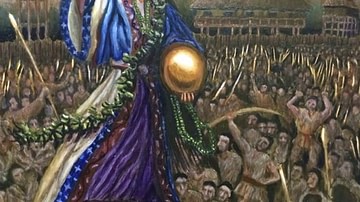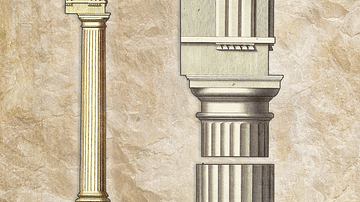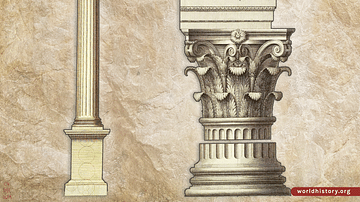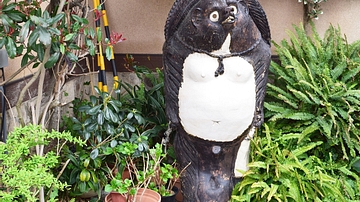Search
Search Results

Definition
Queen Himiko
Queen Himiko, also known as Pimiko or Pimiku (183? - 248 CE), was a 3rd-century CE ruler of the territory in ancient Japan known as Hsieh-ma-t'ai or Yamatai, later to be known as Yamato. Considered by the Chinese as the ruler of all of Japan...

Video
The History of Japanese Green Tea
Did you know that, according to legend, tea came from the eyelids of a monk? Green Tea in Japan has a long history, dating back to the 8th century where it began its importance in the country as a stimulant for meditating monks. In both...

Image
The Classical Orders of Architecture - From Greece to Rome, the Five Pillars of Architectural Design
This infographic illustrates the five classical orders of architecture—Doric, Ionic, Corinthian, Tuscan, and Composite—as developed in ancient Greece and Rome. These column styles, each with distinct proportions and decorative features, became...

Article
Ancient History Encyclopedia in Japan
The “Ancient Japan” initiative at Ancient History Encyclopedia arose as there is a dearth of open access and digitally curated information concerning early Japanese history available online and in English. East and Southeast Asia are arguably...

Image
The Doric Order, Classical Orders of Architecture
The Classical Orders of Architecture (Doric, Ionic, Corinthian, Tuscan, and Composite), originating in ancient Greece and refined by the Romans, are fundamental design principles that significantly influence classical and neoclassical structures...

Definition
Kamakura Period
The Kamakura Period or Kamakura Jidai (1185-1333 CE) of medieval Japan began when Minamoto no Yoritomo (1147-1199 CE) defeated the Taira clan at the Battle of Dannoura in 1185 CE. The period is named after Kamakura, a coastal town 48 kilometres...

Image
The Ionic Order, Classical Orders of Architecture
The Classical Orders of Architecture (Doric, Ionic, Corinthian, Tuscan, and Composite), originating in ancient Greece and refined by the Romans, are fundamental design principles that significantly influence classical and neoclassical structures...

Image
The Corinthian Order, Classical Orders of Architecture
The Classical Orders of Architecture (Doric, Ionic, Corinthian, Tuscan, and Composite), originating in ancient Greece and refined by the Romans, are fundamental design principles that significantly influence classical and neoclassical structures...

Image
Japanese Tanuki
Statues of the Japanese Tanuki (or Japanese raccoon dog) are found all over Japan, especially around shrines and taverns. The Japanese have many legends about the tanuki, but they are generally believed to be playful and foolish creatures...

Article
The Horse-rider Theory in Ancient Japan
The 'horse-rider theory' is a controversial proposal that Japan was conquered around the 4th or 5th century CE by a culture from northern Asia to whom the horse was especially important. Although archaeological evidence and genetics point...